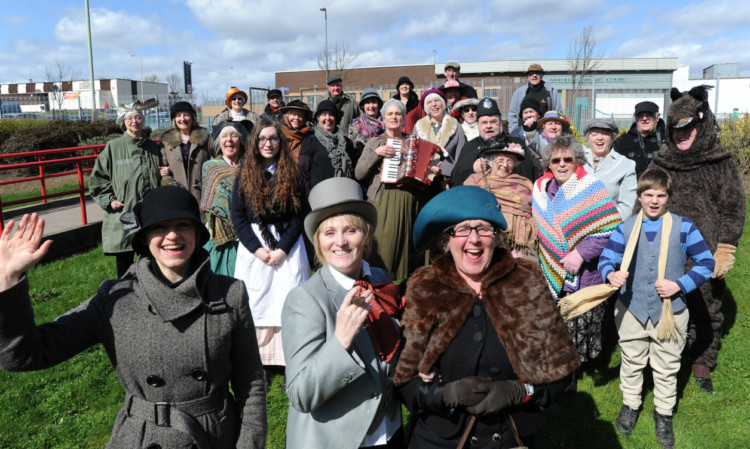Hobby horses may not be quite as fast as the real thing, but they still made for a colourful start to a celebration of the lost-long Longhaugh Racecourse.
The children’s competition on Saturday was among the highlights of a family fun day that also saw people dressing up in period costumes and performances by singing groups.
The event, organised by community group Dighty Connect, was held to mark the 90th anniversary of the racecourse, which proved to be wildly successful at its first meeting but then saw its visitor numbers diminish and was quickly closed.
A grandstand was constructed in 1924 on the hill above Longhaugh House, looking down on present day Whitfield Drive.
The course took in part of Longhaugh Road, went through what is now a school playground and ended with a finishing straight close to the line of Longhaugh Terrace.
The first two-day meeting was held in April that year with more than 50 horses entered. Some 10,000 people turned up for the races on Saturday and the crowd of spectators doubled for those on Monday.
A newspaper report at the time said: “Owners, jockeys, stable hands and, last but not least, bookmakers have come into the city with various trains in the last couple of days.
“Tick-tacks or tipsters are busy along with citizens with ‘exclusive’ information.”
On the Monday, crowds arranged themselves along the railings bordering the course and cheered the horses as they galloped past.
“The bookmakers again did brisk business and there were about 200 of them competing for the attention of punters,” a report said.
“Swollen by the stentorian cries of the bookies, the vocal exertions of itinerant singers and vendors, the band music, and the laughter and general chatter of the moving throngs, the general din was almost deafening.”
The organising company had hoped that Longhaugh might become a regular horse racing venue in Scotland, along with Musselburgh and Hamilton, but it was not to be.
Race meetings were held in July and October that year but they attracted much smaller crowds and the company was wound up in 1925.
